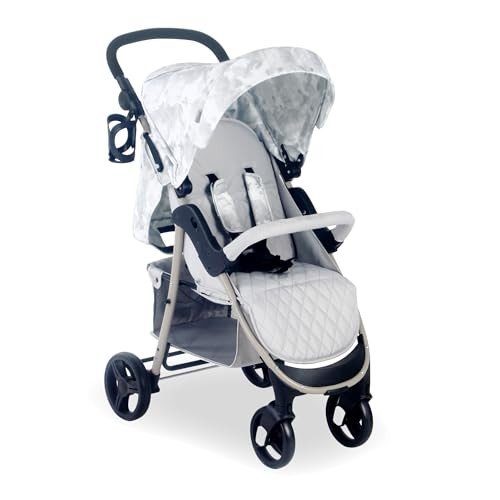14 Clever Ways To Spend Extra Money Pram Budget

Understanding Prams: A Comprehensive Guide
Prams, brief for 'perambulators', are an essential tool for parents and caregivers with babies. These wheeled devices supply a safe and comfortable way to carry babies, making getaways more workable. Nevertheless, prams are not just about convenience; they are likewise an important element of child advancement and security. This post explores the types, benefits, and factors to consider when picking a pram, guaranteeing that parents are educated in their selection.
Types of Prams
Prams differ commonly in regards to style, functionality, and functions. Understanding the types available can assist moms and dads choose the best one for their needs.
1. Conventional Prams
Traditional prams are timeless baby carriages that typically include a deep lying-down cot. They offer a smooth ride, allowing infants to lie flat and conveniently when out and about.
2. Travel Systems
These are flexible options that combine a stroller and a safety seat, making shifts smooth for parents who frequently travel. Travel systems facilitate simple transfer between automobile and pram without interrupting the baby.
3. Umbrella Strollers
Light-weight and compact, umbrella strollers are ideal for moms and dads who need a portable option. Though they often have less features and might not appropriate for newborns, they are exceptional for older babies and toddlers.
4. Jogging Strollers
Created for active parents, running strollers have bigger, more steady wheels and a strong frame, enabling them to manage rough surface. These are best fit for households who enjoy outdoor activities and wish to incorporate physical fitness into their parenting routine.
5. Double Prams
For households with twins or siblings of close age, double prams offer area for two children side by side or one behind the other. They use similar security and convenience functions as single prams but accommodate numerous passengers.
Benefits of Using a Pram
Prams offer many benefits for both kids and moms and dads:
- Safety: Prams supply a safe and secure and enclosed area for infants and toddlers, securing them from prospective dangers.
- Comfort: Many prams are designed with padded seats, sunshades, and adjustable recline positions to keep babies comfy during outings.
- Convenience: Prams make it easier for parents to navigate, specifically in city environments where carrying an infant can become troublesome.
- Adaptability: With various styles readily available, prams can adjust to different way of lives, whether it's casual walks, jogging, or traveling.
- Bonding Time: Using a pram enables parents to be physically close to their baby while exploring and taking pleasure in different environments together.
Picking the Right Pram
Picking the ideal pram can be daunting offered the myriad of options. Here are some factors to consider to direct parents:
1. Age of the Child
- Newborns: Look for prams that provide full recline options and compatibility with infant safety seat.
- Infants: Choose a flexible design that permits a transition to an upright position.
- Toddlers: Lightweight and easy-fold designs can be more useful.
2. Lifestyle
- Urban: A compact, quickly maneuverable pram is vital for browsing city streets.
- Active: Those who jog or go on treking trips ought to consider a robust jogging stroller.
- Travel: Models that fast to fold and lightweight are much better for parents on the go.
3. Spending plan
Prams can vary from economical to high-end designer choices. Identify the necessary functions you need and prevent unnecessary costs.
4. Security Standards
Ensure the pram abides by regional security policies and features safety harnesses, brakes, and sturdy building materials.
5. Practical Features
Consider features like storage area, removable seats for simple cleaning, weather condition canopies, and adjustable handles based upon individual choice.
Table of Key Pram Features
| Kind of Pram | Secret Features | Ideal Age | Rate Range |
|---|---|---|---|
| Conventional Prams | Deep cot; terrific suspension | Newborn to 6 months | ₤ ₤ - ₤ ₤ ₤ |
| Travel Systems | Stroller and safety seat combination | Newborn onwards | ₤ ₤ - ₤ ₤ ₤ ₤ |
| Umbrella Strollers | Lightweight; simple fold | 6 months onwards | ₤ - ₤ ₤ |
| Jogging Strollers | Durable wheels; security harness | 6 months onwards | ₤ ₤ - ₤ ₤ ₤ |
| Double Prams | Seats for two children; varied designs | Newborn to young child | ₤ ₤ ₤ - ₤ ₤ ₤ ₤ |
FAQs About Prams
1. The length of time can I utilize a pram for my kid?
Many prams are developed to accommodate children from newborn through to about 4 years of age, depending on the design and weight limit.
2. Can I use a pram for running?
Just utilize a running stroller for jogging or running. Routine prams are not designed to hold up against such high-impact activities.
3. How do I clean my pram?
Most pram materials can be area cleaned with mild soap and water. Detachable covers typically can be device cleaned, though it's essential to check out the producer's instructions.
4. What is the weight limit for prams?
This varies by model but normally ranges from around 50 lbs to 75 lbs. Constantly check the requirements before making a purchase.
5. How do I safely protect my baby in the pram?
Guarantee that your baby is securely fastened in with the five-point harness, and never ever leave them ignored in the pram.
Choosing the best pram is an important choice for moms and dads, which involves weighing different factors such as security, comfort, and benefit. Comprehending Prams For Newborn of prams readily available and their particular functions makes it possible for moms and dads to make informed choices that best suit their household's requirements. By prioritizing safety and functionality, caretakers can guarantee that walks, runs, and trips with their kids are comfy and enjoyable experiences.

